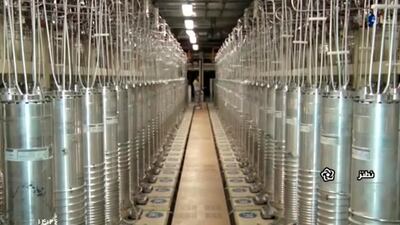The UN nuclear watchdog started talks with Iran on Monday aimed at obtaining explanations about the origin of uranium traces in the country, an issue that could affect efforts to revive Tehran's 2015 nuclear deal.
An agreement to hold the talks helped to persuade European powers to delay seeking a resolution criticising Iran at a meeting of the International Atomic Energy Agency's 35-nation board of governors last month.
That avoided an escalation with Iran that could have hurt efforts to bring Washington and Tehran back into full compliance with the 2015 deal, under which Iran agreed to limits on its nuclear programme in return for lifting sanctions.
Failure to make progress on explaining the uranium traces could mean France, Britain and Germany push for a resolution with US backing by the next IAEA board meeting in June.
"The IAEA and Iran began today to engage in a focused process aimed at clarifying outstanding safeguards issues," the IAEA said.
The Iran nuclear deal effectively drew a line under what the IAEA and US intelligence agencies believe was a secret, co-ordinated nuclear weapons programme that Iran halted in 2003.
Iran denies seeking to develop nuclear weapons.
But in the past two years, IAEA inspectors found traces of processed uranium at three sites Iran had not declared, suggesting Tehran had nuclear material connected to old activities that remains unaccounted for.
The IAEA must track that material down to be sure Iran is not diverting any to make nuclear weapons.
The issue has complicated the diplomatic effort to resurrect the 2015 deal, which former US president Donald Trump abandoned in 2018.
That prompted Iran to breach the limits of the accord.
US President Joe Biden aims to resurrect the deal but the White House and Tehran are at odds over how to do that.
A first IAEA-Iran meeting to discuss the uranium traces was due to take place in Tehran in early April, but that was delayed as talks to rescue the deal, involving its remaining parties and indirectly the US, were being arranged in Vienna.
"Today's meeting took place in Vienna, as participating Iranian experts are also involved in separate meetings on the Joint Comprehensive Plan of Action at another location in the Austrian capital," the IAEA said.

